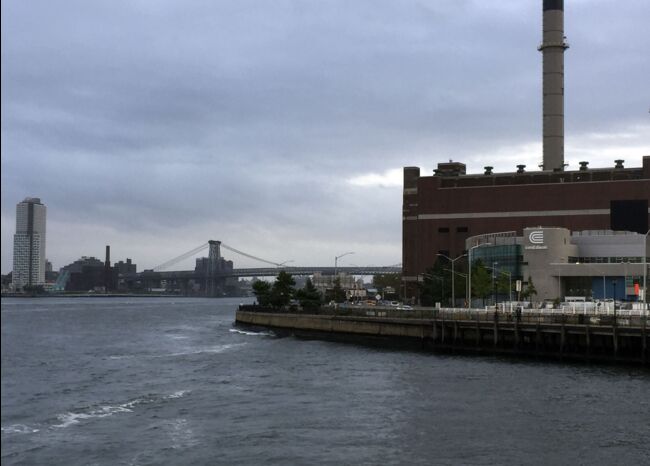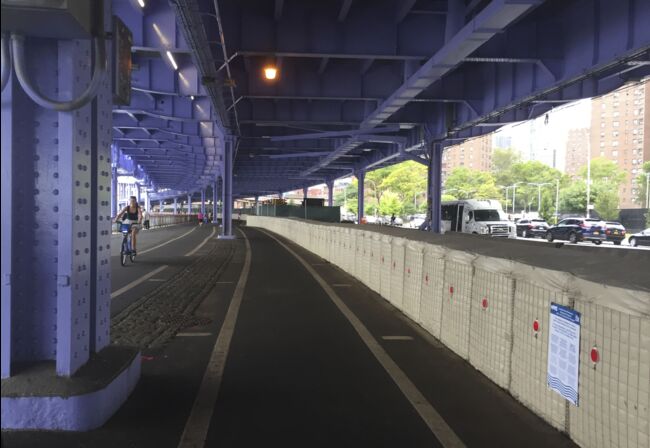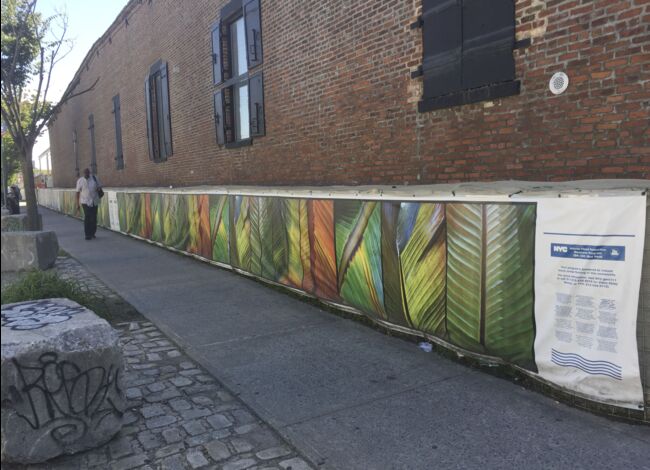Low walls of sand in Manhattan and Brooklyn, raised dunes on the most exposed beaches, vast construction sites under study: New York wants to be a model of anticipation in the face of rising waters, but the work is progressing slowly and the bill is growing. astronomical announcement.
Since Hurricane Sandy of October 29, 2012, which left 44 dead, 19 billion dollars in damage and paralyzed for days during the American economic capital, New Yorkers no longer doubt climate change.
In a city so dense that no one can imagine deserting the most exposed coastal areas, the municipality has made the fortification of its 850 kilometers of coastline a priority. And announced a series of measures to protect themselves from the waters – which could rise by 1.80 m by 2100 – and the repeated storms that are looming.
To the southeast, on the Rockaways peninsula, near JF Kennedy Airport, and to the south, on Staten Island, two neighborhoods hard hit by Sandy, 15 kilometers of dunes have been erected, and millions of tons of sand dumped to shore up the beaches of the Rockaways or Coney Island, Brooklyn.
Several billion dollars have been spent to protect the electricity network and the subway, essential to the movement of 8.5 million New Yorkers.
Low walls made of sand containers specially designed against flooding have appeared in several neighborhoods, especially in Brooklyn or Manhattan, near Wall Street: a temporary protection measure, for five years, pending more permanent fortifications to protect the heart history and finance of New York.
According to official projections, 37% of buildings in Manhattan’s tip will be exposed to storm surges by 2050, and 20% of streets are at risk of daily flooding by 2100.
– 120 billion for the estuary –

The most ambitious projects have not yet started: in 2020, the town hall must launch work over three years to raise the large park along the East River in southern Manhattan.
And the Democratic mayor Bill de Blasio presented in March a project to protect the southern tip of Manhattan, where 10% of the city’s jobs are concentrated: it would be extended by a strip of land, which would make it possible to gain 150 meters on the East River and “absorbing the energy of a storm,” says Steve Cohen, an environmental policy expert at Columbia University’s Earth Institute.
But this work would take years and cost up to $ 10 billion, the funding of which is uncertain.

Beyond these neighborhood projects, the US Army Corps of Engineers is studying plans covering the entire New York region.
Among the options he must refine by 2020, the cost of which ranges from $ 15 billion to $ 120 billion, the most expensive – and the most unlikely – provides for a system of submerged barriers for the entire New York estuary . It would reduce the risk of flooding by 92%, but would also risk choking the ecosystem.
At the other extreme, for 15 billion, a more traditional project of dikes and coastal barriers would reduce the risk by only 25%.
– Disturbing delays –
The decision will be taken with the city, but one thing is certain: the work promises to be long, and the overall envelope of 20 billion initially announced is only a “down payment”, according to the municipality. Leading some New Yorkers to worry.
“Seven years after Sandy, we still talk about sandbags as the main mode of defense against major storms (…) We must wake up before it is too late”, laments Justin Brannan, elected municipal of the exposed neighborhoods of Brooklyn, who chairs the city’s “resilience” commission.
“There is a huge gap between what New York City has been able to do and what needs to be done,” also underlines Roland Lewis, president of the NGO Waterfront Alliance, active on all New York coastal issues. “We are one of the great cities in the world, we are very rich, and yet we are not able to protect ourselves against the new climate reality.

Like many New York officials, Lewis deplores “a huge vacuum” on the federal side: not only is Donald Trump’s climate-skeptical government not helping the city financially, but “it’s actively acting against the grain,” says -it, in particular by eliminating certain laws aimed at reducing American greenhouse gas emissions.
Despite all these obstacles, and the risk of another hurricane to strike before the fortifications are complete, Steve Cohen of Columbia University remains calm.
“Of course people would prefer it to go faster,” he says. “But what looks like delay is actually a lot of analysis and planning (…) It’s better to do things right than to make mistakes.”
–
Every week, the planet and biodiversity news in the GEO Environment newsletter


